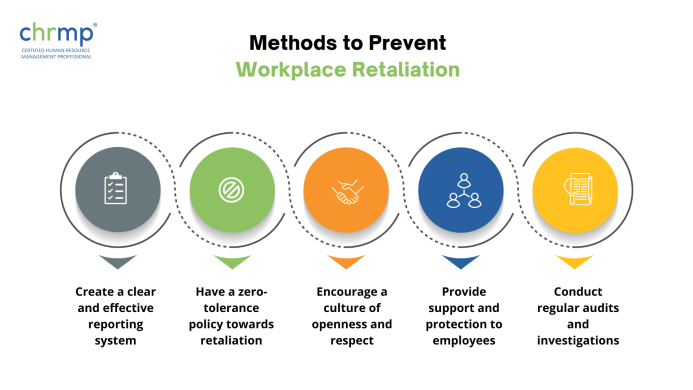
What is At-Will Employment? A Beginner’s Guide to Understanding Your Rights & Responsibilities
Have you ever heard the term "at-will employment" and wondered what it truly means for your job or your business? It’s a fundamental concept in U.S. labor law, yet it’s often misunderstood. For many, it conjures images of an employer being able to fire someone "for any reason or no reason at all." While there’s a kernel of truth to that, the reality is more nuanced, with important exceptions and implications for both employees and employers.
This comprehensive guide will break down at-will employment in easy-to-understand terms, explain its origins, explore its exceptions, and provide practical advice for navigating this common employment standard.
Understanding the Basics: What Exactly is At-Will Employment?
At its core, at-will employment means that an employer can terminate an employee for any reason, no reason, or even a morally wrong reason (as long as it’s not an illegal reason). Similarly, an employee is free to leave their job at any time, for any reason, or no reason, without notice.
Think of it as a two-way street, though the power dynamics can often feel skewed.
The Two Sides of the At-Will Coin:
-
Employer’s Right:
- An employer can terminate an employee’s employment at any time.
- They generally don’t need to provide a reason for the termination.
- They don’t need to give prior notice (though often they do, or offer severance).
- This applies unless there’s a specific contract stating otherwise, or an illegal reason for termination (which we’ll discuss in detail).
-
Employee’s Right:
- An employee can resign from their position at any time.
- They generally don’t need to provide a reason for leaving.
- They don’t need to give prior notice (though giving two weeks’ notice is a common professional courtesy).
- This provides employees with the flexibility to seek new opportunities or leave unsatisfactory work environments.
Essentially, under at-will employment, neither party is bound to the other for a specific term or duration. The employment relationship can be severed at any time by either the employer or the employee.
Where Does At-Will Employment Apply?
At-will employment is the default legal standard for employment in most states across the United States. Only one U.S. state, Montana, does not operate under the at-will doctrine, instead requiring "good cause" for termination after a probationary period.
This means that if you don’t have a written employment contract that specifies a term of employment (e.g., "this contract is for one year") or outlines specific conditions for termination (e.g., "employment may only be terminated for cause"), then your employment is most likely at-will.
Why Does At-Will Employment Exist? A Brief History
The concept of at-will employment emerged in the late 19th century in the U.S., largely influenced by economic theories favoring freedom of contract and minimal government intervention in the workplace. The idea was to promote flexibility for businesses, allowing them to adapt quickly to economic changes, reduce staff during downturns, or dismiss underperforming employees without extensive legal hurdles.
From this perspective, it was seen as a reciprocal agreement: if an employer could dismiss an employee freely, an employee could also leave freely. This framework, though debated, has remained the prevailing standard for over a century.
Crucial Exceptions to At-Will Employment: It’s Not a Free-for-All!
While the "at-will" rule sounds broad, it’s vital to understand that it’s not absolute. There are significant exceptions that protect employees from arbitrary or discriminatory terminations. These exceptions are often the basis for "wrongful termination" lawsuits.
Here are the primary exceptions to the at-will doctrine:
-
Public Policy Exception:
- This is the most widely recognized exception. It prevents an employer from firing an employee for reasons that violate a fundamental public policy.
- Common Examples:
- Refusing to commit an illegal act: An employer cannot fire you for refusing to falsify documents or commit fraud.
- Exercising a legal right: Firing someone for filing a workers’ compensation claim, taking Family and Medical Leave Act (FMLA) leave, or serving on a jury is generally illegal.
- Whistleblowing: Terminating an employee for reporting an employer’s illegal activities (like environmental violations, financial fraud, or workplace safety issues) to authorities.
- Performing a public duty: Firing an employee for performing a civic duty, such as serving in the military.
-
Implied Contract Exception:
- Even without a formal written contract, an "implied contract" can be formed through an employer’s words or actions, or through company policies.
- Examples:
- Employee Handbooks: If a handbook outlines specific disciplinary procedures (e.g., "employees will receive three warnings before termination"), an employer might be bound to follow them. If they don’t, it could be a breach of an implied contract.
- Verbal Promises: An employer stating, "As long as you do your job, you’ll have a job here," could, in some cases, be interpreted as an implied promise of continued employment.
- Long-Term Employment & Promotions: A history of promotions, raises, and positive performance reviews might, in very specific circumstances, contribute to an implied contract, especially if coupled with other factors.
-
Covenant of Good Faith and Fair Dealing Exception:
- This is the least common exception, recognized in only a few states (like Massachusetts and California). It implies that both parties in an employment relationship will act in good faith and deal fairly with each other.
- Example: An employer cannot fire an employee just to avoid paying them earned commissions or bonuses that are about to vest. This exception generally protects employees from terminations designed to prevent them from receiving benefits they’ve already effectively earned.
-
Statutory Exceptions (Anti-Discrimination Laws):
- This is arguably the most significant and common set of protections. Federal and state laws prohibit employers from firing employees based on certain protected characteristics. This is not an exception to at-will, but rather an overlay that makes certain "reasons" for termination illegal.
- Federal Laws (e.g., Title VII of the Civil Rights Act of 1964): Prohibit discrimination based on:
- Race
- Color
- Religion
- Sex (including pregnancy, sexual orientation, and gender identity)
- National Origin
- Age (for employees 40 and older, under the ADEA)
- Disability (under the ADA)
- Genetic information (under GINA)
- Many states and cities have additional protected classes (e.g., marital status, veteran status, political affiliation).
- Retaliation: It’s also illegal to fire an employee in retaliation for them reporting discrimination, participating in an investigation, or exercising their rights under these laws.
-
Union Contracts (Collective Bargaining Agreements):
- If you are part of a labor union, your employment is likely governed by a Collective Bargaining Agreement (CBA) between the union and the employer. These agreements almost always supersede at-will employment and require "just cause" for termination. They also outline grievance procedures that must be followed.
Advantages and Disadvantages of At-Will Employment
At-will employment has proponents and detractors, each highlighting different aspects of its impact.
Advantages:
- For Employers:
- Flexibility: Allows businesses to quickly adjust staffing levels in response to economic changes, market demands, or performance issues.
- Reduced Bureaucracy: Simplifies the termination process, avoiding lengthy legal battles over "cause" in many situations.
- Performance Management: Makes it easier to remove underperforming or disruptive employees, theoretically improving overall team productivity.
- For Employees:
- Flexibility: Allows employees to leave unsatisfactory jobs without fear of breach of contract, pursuing better opportunities or work-life balance.
- Easier Hiring: Employers may be more willing to hire if they know the relationship isn’t a permanent commitment.
Disadvantages:
- For Employees:
- Job Insecurity: Can lead to a feeling of vulnerability, as employment can be terminated unexpectedly, even after years of service.
- Limited Recourse: Unless an exception applies, employees have little legal recourse if terminated for unfair, but not illegal, reasons.
- Fear of Speaking Out: May discourage employees from raising legitimate concerns about workplace conditions or ethics due to fear of retaliation (even if illegal, proving it can be difficult).
- For Employers:
- High Turnover: The ease of leaving can contribute to higher employee turnover, increasing recruitment and training costs.
- Lower Morale: Perceived arbitrary terminations can damage morale and trust among remaining employees.
- Potential for Lawsuits: While simpler in theory, wrongful termination lawsuits (based on the exceptions) can still be costly and damaging to reputation.
- Loss of Institutional Knowledge: Experienced employees leaving or being terminated can take valuable knowledge with them.
What At-Will Employment DOES NOT Mean (Common Misconceptions)
It’s crucial to clarify what at-will employment does not imply:
- It does NOT mean an employer can fire you for any reason, no matter what. As discussed, illegal discrimination, retaliation for protected activities, or violations of public policy are strictly prohibited.
- It does NOT mean employers can break promises made in an employee handbook. If a handbook outlines specific procedures (like progressive discipline), courts may consider it an implied contract.
- It does NOT mean you have no rights. Employees still have rights under federal and state anti-discrimination laws, wage and hour laws, safety regulations, and other protective legislation.
- It does NOT mean you don’t need notice to quit. While legally you might not, giving two weeks’ notice is standard professional courtesy and helps maintain good references.
Navigating At-Will Employment: Advice for Employees and Employers
Understanding at-will employment is key to protecting your interests.
For Employees:
- Read Everything Carefully: Pay close attention to any employment contracts, offer letters, and especially employee handbooks. Understand what they say about your employment terms and termination.
- Document Everything: If you believe you are being treated unfairly or illegally, keep detailed records of dates, times, conversations, emails, and any witnesses.
- Know Your Rights: Familiarize yourself with federal and state anti-discrimination laws, whistleblower protections, and public policy exceptions in your state. Resources like the Equal Employment Opportunity Commission (EEOC) and your state’s Department of Labor are good starting points.
- Seek Legal Advice: If you suspect you’ve been wrongfully terminated or subjected to illegal discrimination, consult with an employment law attorney. They can assess your situation and advise on your options.
- Professional Conduct: Always strive for professionalism, even when leaving a job. Giving notice and ensuring a smooth transition can protect your professional reputation and future references.
For Employers:
- Clear Policies: Ensure your employee handbook clearly states your at-will employment policy and outlines any disciplinary procedures or expectations. Be consistent in applying these policies.
- Document Performance: Maintain thorough and objective documentation of employee performance, disciplinary actions, and any issues that could lead to termination. This is crucial defense in potential wrongful termination claims.
- Consistent Application: Apply policies and disciplinary actions consistently across all employees to avoid claims of discrimination or unfair treatment.
- Avoid Implied Contracts: Be cautious with verbal promises regarding job security. Review employee handbooks and other internal documents to ensure they don’t inadvertently create implied contracts.
- Train Managers: Educate managers and supervisors on at-will employment, its exceptions, and the importance of non-discriminatory practices and proper documentation.
- Consult Legal Counsel: Before terminating an employee, especially if there are any red flags (e.g., the employee recently filed a complaint, is in a protected class, or is on a protected leave), consult with an employment law attorney to ensure compliance and mitigate risk.
Conclusion: At-Will Employment – A Balance of Flexibility and Protection
At-will employment remains the bedrock of the employment relationship for the majority of American workers. While it grants significant flexibility to both employers and employees, it’s not a license for arbitrary or illegal actions. The robust framework of exceptions, particularly those related to public policy and anti-discrimination laws, provides crucial protections against wrongful termination.
For both parties, understanding these nuances is paramount. Employees must know their rights and how to protect them, while employers must operate with transparency, consistency, and a keen awareness of legal boundaries. By doing so, the workplace can maintain its flexibility while upholding principles of fairness and legality.
Disclaimer: This article provides general information about at-will employment and is not intended as legal advice. Employment laws are complex and vary by state. If you have specific questions about your employment situation, it is highly recommended that you consult with a qualified employment law attorney.



Post Comment